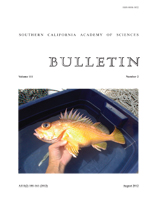Size can play an important role in determining reproductive success through the establishment of dominance hierarchies and mate selection. We explored the relationship between size of individuals and courtship success in the kelp perch, Brachyistius frenatus, off the coast of southern California at Santa Catalina Island. Courtship displays were timed and the length of the interaction was used as a proxy for courtship success. In addition, we observed how much of their time individuals spent performing different activities throughout the day in two adjacent habitats dominated by different macroalgae. We found that body size played a significant role in determining the success of courtship. Large males were slightly more successful than small males, but the male: female size ratio was the best predictor of mating success of male B. frenatus, with males that were large relative to the female they were courting being most successful. Time allocated to different activities varied significantly with time of day and habitat. A greater proportion of time was spent on foraging in the morning than in the afternoon, and females spent more of their time foraging than did males. Behaviors other than foraging were only observed in one habitat type (understory algae) and courtship behavior was only observed during the afternoon. Smaller males tended to spend more time searching for receptive females than did larger males.
How to translate text using browser tools
1 August 2012
Factors Affecting Courtship Success and Behavior of a Temperate Reef Fish, Brachyistius frenatus
Jesse S. Tootell,
Mark A. Steele
ACCESS THE FULL ARTICLE





